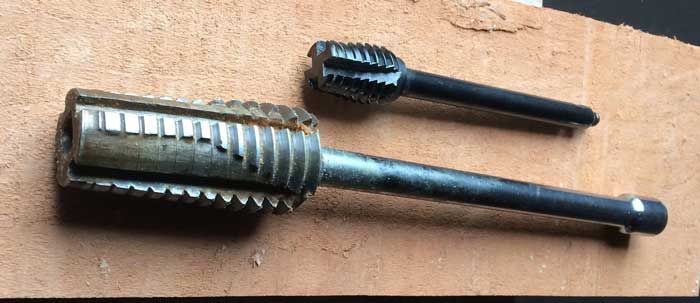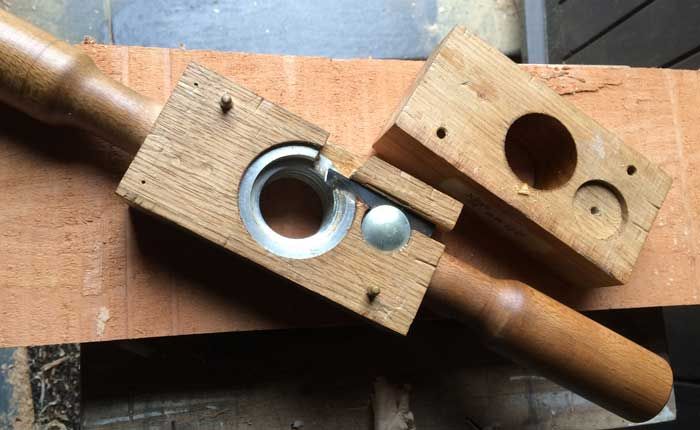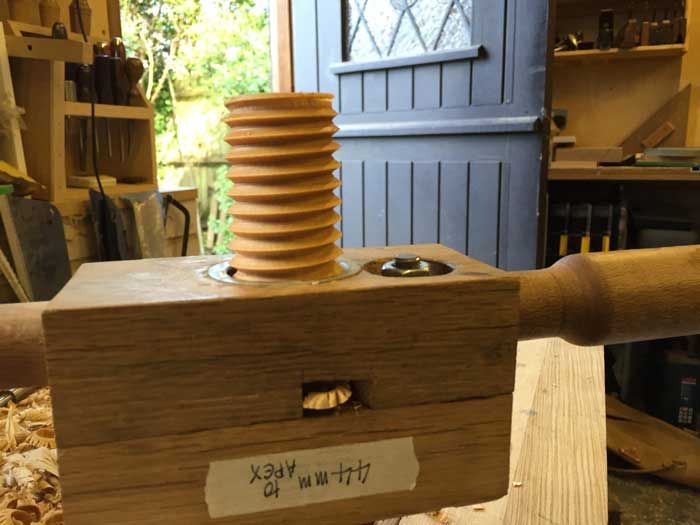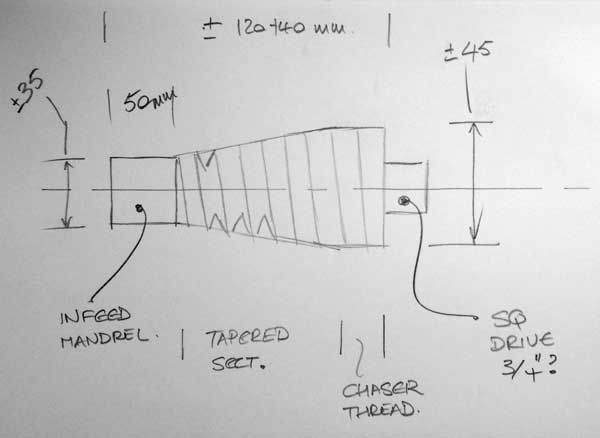You should be able to cut that thread in a Myford, surely? All you need is a gear on the headstock spindle that is double the size of the gear on the leadscrew, eg a 60T and 30T, or a 40T and 20T. Or if using a QC gearbox, set it to cut 8tpi and introduce the 2:1 ratio in the gears between gearbox and headstock spindle?
You then just have to remember to grind the screwcutting tool with the much extra clearance on the lead side to allow for the helix of the coarse thread.
Or can you clamp the wooden vice components to the faceplate and screwcut the threads straight into the wood in th elathe? Or alternatively, clamp the wooden vice part to the cross slide and screwcut the internal thead using a boring head mounted to the headstock spindle?
Or am I not understanding your question at all?
Hopper.








